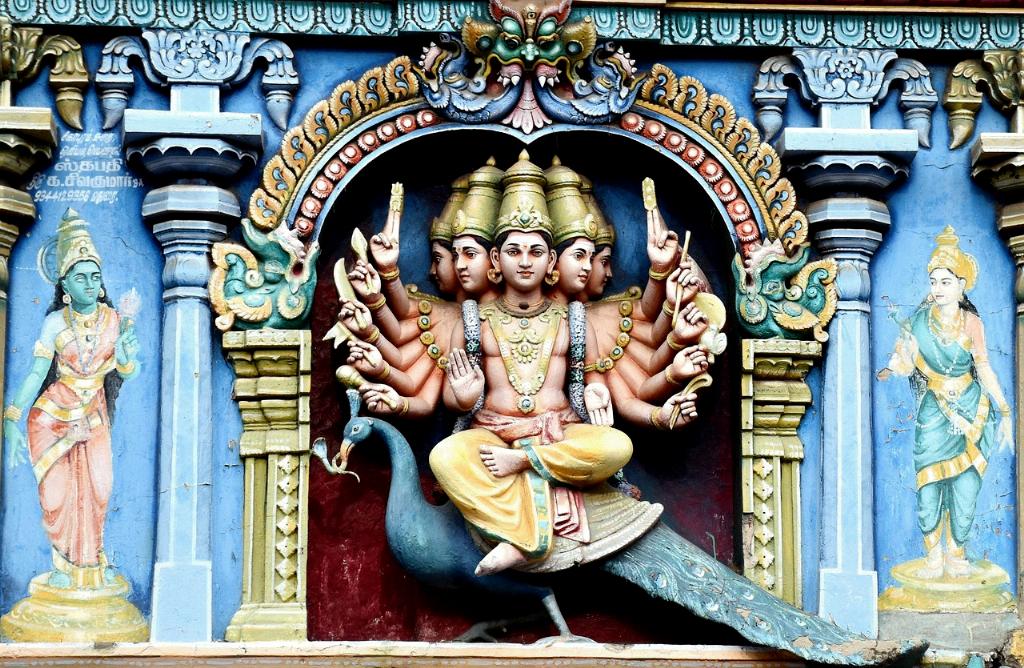Hinduism, one of the world’s oldest religions, is filled with rich symbolism that holds deep significance for its followers. Symbols are an integral part of Hinduism, representing various aspects of the faith and its teachings. One of the key symbols in Hinduism that embodies the idea of creation is the “Om” (or “Aum”) symbol, along with the lotus flower.
Significance of Creation Symbol in Hinduism
Hindu cosmology revolves around the concept of creation, where the universe is believed to undergo cycles of birth, existence, and dissolution. According to Hindu mythology, the creation process begins with the sacred sound of “Om.” This primordial sound is thought to be the first vibration that emerged from the cosmic void, giving birth to the universe itself.
The “Om” symbol, represented as a combination of Sanskrit letters, is considered the essence of all mantras and prayers in Hinduism. Chanting “Om” is believed to connect the individual with the universal consciousness and the divine energy that permeates all existence.
Similarly, the lotus flower is intricately linked to creation and rebirth in Hinduism. The lotus has long been revered as a symbol of purity, beauty, and divine grace. It represents the journey of the soul from the depths of darkness to spiritual enlightenment, just as the lotus emerges from muddy waters to bloom into a stunning flower.
Depiction of Creation Symbol in Hindu Scriptures
Hindu scriptures, such as the Vedas and the Upanishads, contain references to the creation symbol and delve into the deep philosophical concepts surrounding it. These ancient texts describe creation myths that incorporate the symbol of “Om” and explore its significance in the cosmic order.
According to Hindu mythology, the sound of “Om” resounded as the universe came into existence. The symbol is often associated with the Hindu deities Brahma, the creator, and Saraswati, the goddess of knowledge and arts.
Symbolic interpretations of the creation symbol within Hindu scriptures suggest that it represents the omnipresence of the divine, the cyclic nature of life, and the ultimate reality underlying all existence.
Symbolic Elements of the Creation Symbol
The creation symbol in Hinduism consists of several elements, each carrying its own symbolic meaning. The curved upper part of the symbol represents the waking state of consciousness, the middle curve symbolizes deep sleep or dream state, and the lower curve signifies the state of unconsciousness or the absolute reality. The dot or bindu above these curves reflects the ultimate union of the individual soul with the universal consciousness.
These elements together depict the creation process and the underlying unity of all things in Hindu cosmology. The symbol is often seen in various forms of Hindu art and architecture, adorning temples and sacred spaces.
Comparative Analysis of Creation Symbols in Hinduism
When exploring creation symbols in Hinduism, it becomes apparent that many other religions also possess symbols related to creation. However, the “Om” symbol and the lotus flower hold unique significance in Hinduism and have distinct interpretations within its religious context.
While other faiths may have creation symbols that signify birth or the origins of the universe, the Hindu creation symbol goes beyond mere representation. It encompasses profound philosophical concepts and serves as a powerful tool for spiritual connection and self-realization.
Cultural and Philosophical Implications of the Creation Symbol
The creation symbol in Hinduism influences various aspects of Hindu culture and society. It is intricately woven into religious rituals and practices, often chanted or meditated upon as a means of attaining higher states of consciousness and invoking divine blessings.
Additionally, the creation symbol holds deep philosophical significance in Hindu thought. It represents the eternal cycle of creation and dissolution, the interconnectedness of all beings, and the quest for spiritual enlightenment.
Modern Interpretations and Contemporary Relevance
In modern times, the creation symbol continues to find relevance and resonance within Hinduism. It has inspired contemporary interpretations in art, fashion, and media, with artists and designers incorporating the symbol into their work to express spiritual and cultural identity.
Beyond the boundaries of Hinduism, the creation symbol has gained popularity as a symbol of peace, harmony, and spiritual awakening, attracting individuals from various backgrounds who seek to connect with their inner selves and a higher power.

Conclusion
The creation symbol in Hinduism, represented by the “Om” symbol and the lotus flower, holds immense significance in the religion’s cosmology, mythology, and philosophy. It encapsulates the eternal process of creation, the divine connection, and the pursuit of spiritual enlightenment. Understanding and embracing this symbolism can deepen one’s appreciation for Hinduism’s rich cultural heritage and provide a pathway to personal growth and self-realization.
